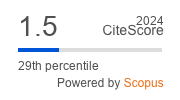Songverse: a digital musical instrument based on Virtual Reality
DOI:
https://doi.org/10.5753/jis.2020.749Keywords:
virtual reality, computer-generated music, musical instrument digital interfaces, human-computer interactionAbstract
We can define Digital Musical Instruments (DMIs) as hardware-software solutions that are interactive and crafted to output sound according to users' input. DMIs are well known to unleash users' creativity but also to allow different and innovative experiences for the creation process, for example, smoothing the learning curve towards musical concepts such as rhythm and composition. On the other hand, Virtual Reality (VR) allows users to explore spatial interfaces in a natural and limitless way, which shows potential synergy towards the rise of new DMIs. In this paper, we introduce Songverse, an immersive DMI placed in a Virtual Reality scenario that allows users to create music by interacting with an environment designed to resemble the outer space. By adding systems, planets, and satellites to the virtual environment, the user can shape the produced sound through interactions that were extensively tested during the development phase. We then evaluated the instrument with musicians and non-musicians by interviewing and applying the System Usability Scale (SUS) to assess the easiness for people to create music using Songverse. As a result, users reported the use of the DMI as intuitive and easy to use, also highlighting the produced song as enjoyable.
Downloads
References
Brooke, J. et al. (1996). Sus-a quick and dirty usability scale. Usability evaluation in industry, 189(194): 4–7.
Cabral, M., Montes, A., Roque, G., Belloc, O., Nagamura,M., Faria, R. R., Teubl, F., Kurashima, C., Lopes, R., and Zuffo, M. (2015). Crosscale: A 3d virtual musical instrument interface. In 2015 IEEE Symposium on 3D User Interfaces (3DUI), pages 199–200. IEEE.
Cook, P. R. (2004). Remutualizing the musical instrument: Co-design of synthesis algorithms and controllers. Journal of New Music Research, 33(3):315–320.
Costa, W., Ananias, L., Barbosa, I., Barbosa, B., De’ Carli, A., Barioni, R. R., Figueiredo, L., Teichrieb, V., and Filgueira, D. (2019). Songverse: A music-loop authoring tool based on virtual reality. In 2019 21st Symposium on Virtual and Augmented Reality (SVR), pages 216–222.
Fillwalk, J. (2015). Chromachord: A virtual musical instrument. In2015 IEEE Symposium on 3D User Interfaces(3DUI), pages 201–202. IEEE.
Gebhardt, S., Pick, S., Leithold, F., Hentschel, B., andKuhlen, T. (2013). Extended pie menus for immersive virtual environments.IEEE transactions on visualization and computer graphics, 19(4):644–651.
Jerald, J. (2015).The VR book: Human-centered design for virtual reality. Morgan & Claypool.
Johnson, D. and Tzanetakis, G. (2017). Vrmin: using mixed reality to augment the theremin for musical tutoring. In NIME, pages 151–156.
Jordà, S., Geiger, G., Alonso, M., and Kaltenbrunner, M. (2007). The reactable: exploring the synergy between live music performance and tabletop tangible interfaces. In Proceedings of the 1st international conference on Tangible and embedded interaction, pages 139–146.
Levin, G. (2006). The table is the score: An augmented-reality interface for real-time, tangible, spectrographic performance. In ICMC.
Marshall, M. T. (2009). Physical interface design for digital musical instruments. PhD thesis, Citeseer.
Slater, M. (2009). Place illusion and plausibility can lead to realistic behaviour in immersive virtual environments. Philosophical Transactions of the Royal Society B: Biological Sciences, 364(1535):3549–3557.
Slater, M. and Wilbur, S. (1997). A framework for immersive virtual environments (five): Speculations on the role of presence in virtual environments.Presence: Teleoperators & Virtual Environments, 6(6): 603–616.
Truong, K.N., Hayes, G.R., and Abowd, G.D.(2006). Storyboarding: an empirical determination of best practices and effective guidelines. In Proceedings of the 6th conference on Designing Interactive systems, pages 12–21.
Valli, A. (2005). Notes on natural interaction. 5 (2012):80.
Zielasko, D., Rausch, D., Law, Y. C., Knott, T. C., Pick, S.,Porsche, S., Herber, J., Hummel, J., and Kuhlen, T. W. (2015). Cirque des bouteilles: The art of blowing on bottles. In 2015 IEEE Symposium on 3D User Interfaces (3DUI), pages 209–210. IEEE.
Downloads
Published
How to Cite
Issue
Section
License
JIS is free of charge for authors and readers, and all papers published by JIS follow the Creative Commons Attribution 4.0 International (CC BY 4.0) license.








